
Zonohedra are convex polyhedra bounded by centrally-symmetrical polygons. Their analogues exist in all higher and lower dimensions: two-dimensional zonogons, four- or -five or trillion-dimensional zonotopes. Broadly, zonotopes are n-dimensional polytopes bounded by (n-1)-dimensional zonotopes. Among their more interesting attributes, is their possible status as shadows of hypercubes. For instance, a regular hexagon (a zonogon) is a plane shadow of a 3-cube (a cube), cast vertex-first. And Kepler's Rhombic Dodecahedron is a solid, polyhedral shadow of a 4-cube (or tesseract), cast vertex-first into a 3-space.
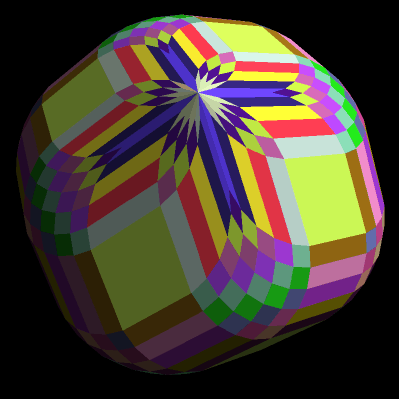
A zonohedron bounded by parallelograms and rhombs. It is related to Kepler's Rhombic Dodecahedron, and has cyclic symmetry. Every edge lies in one of 24 different directions (the 24 vectors which determine this zonohedron); note that any one edge-direction determines a zone of faces which girdle the zonohedron.
The condition of convexity is important. However, some very interesting non-convex polyhedra, also bounded by centrally-symmetrical polygons, arise during the process of zonohedral completion of convex polyhedra. An example, below.

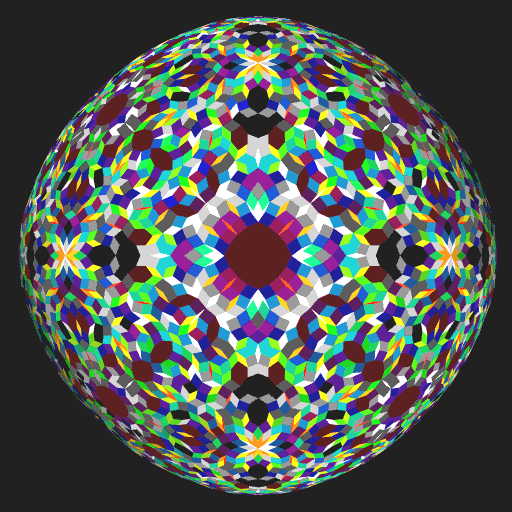
A zonohedron with octahedral symmetry; we
are looking down an axis of 4-fold rotation.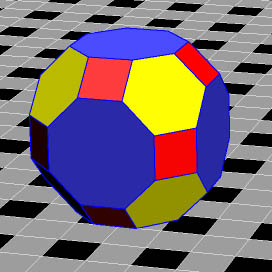
A notorious zonohedron: the Archimedean
Truncated Cuboctahedron.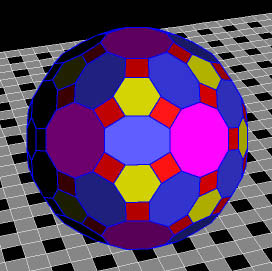
A zonohedron with icosahedral symmetry,
determined by 21 vectors, and an orthogonal shadow of a 21-dimensional
cube, cast into three dimensions!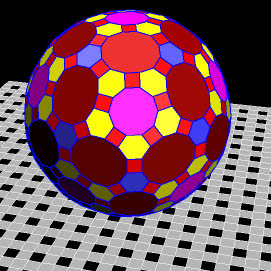
Another shadow with icosahedral symmetry,
cast from a 31-dimensional space into our humble 3-space.
A zonohedron with 14,280 faces.